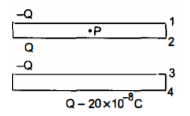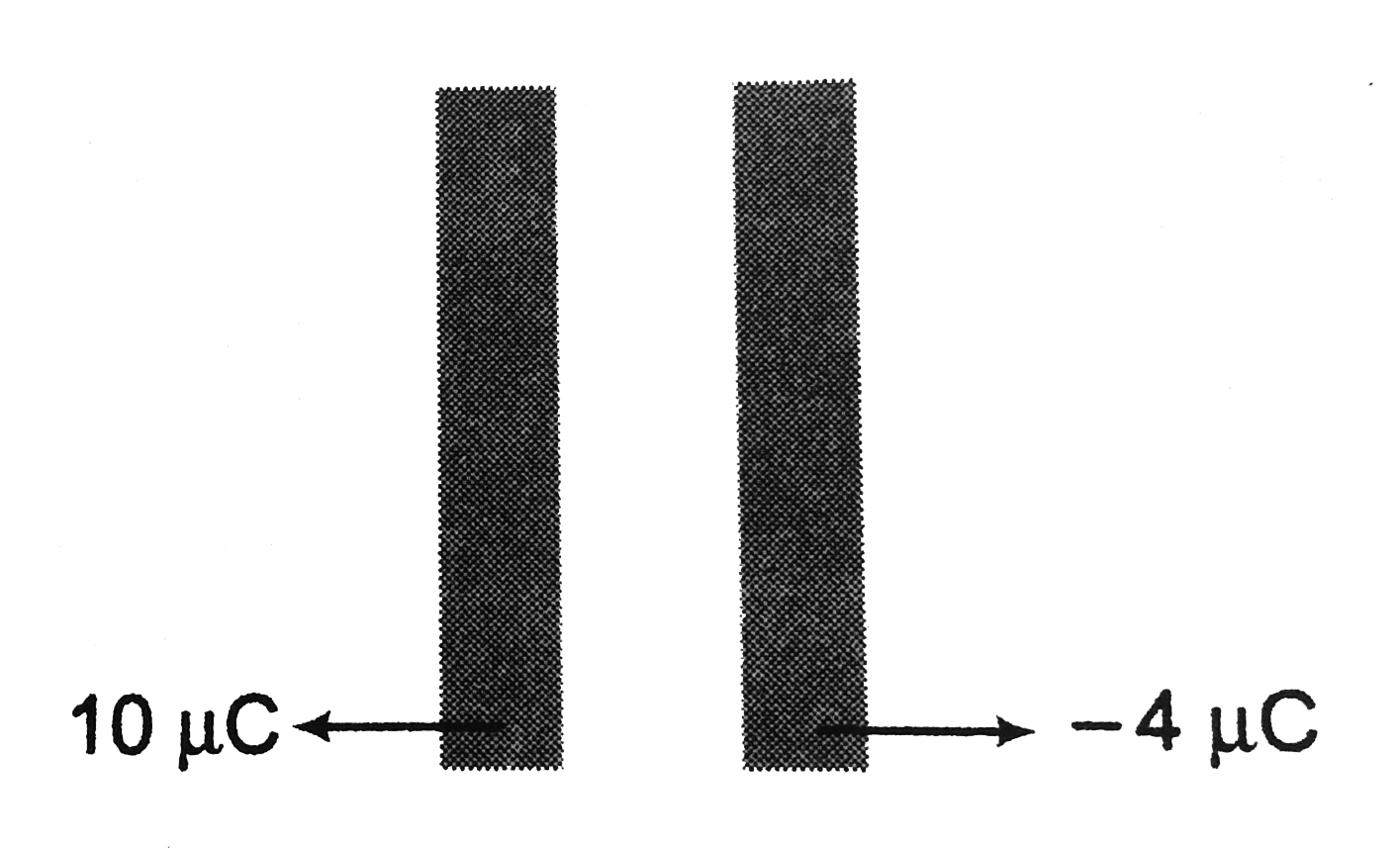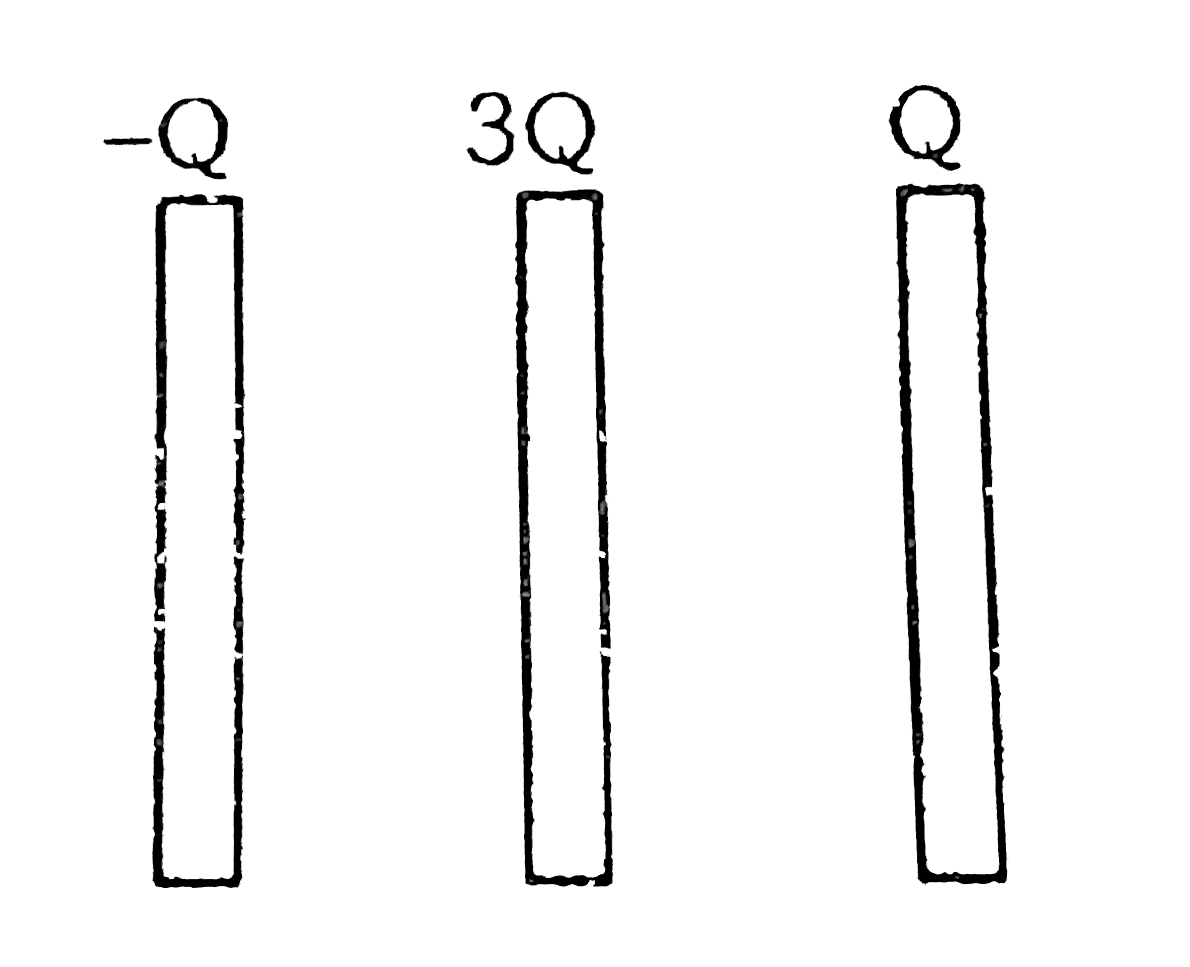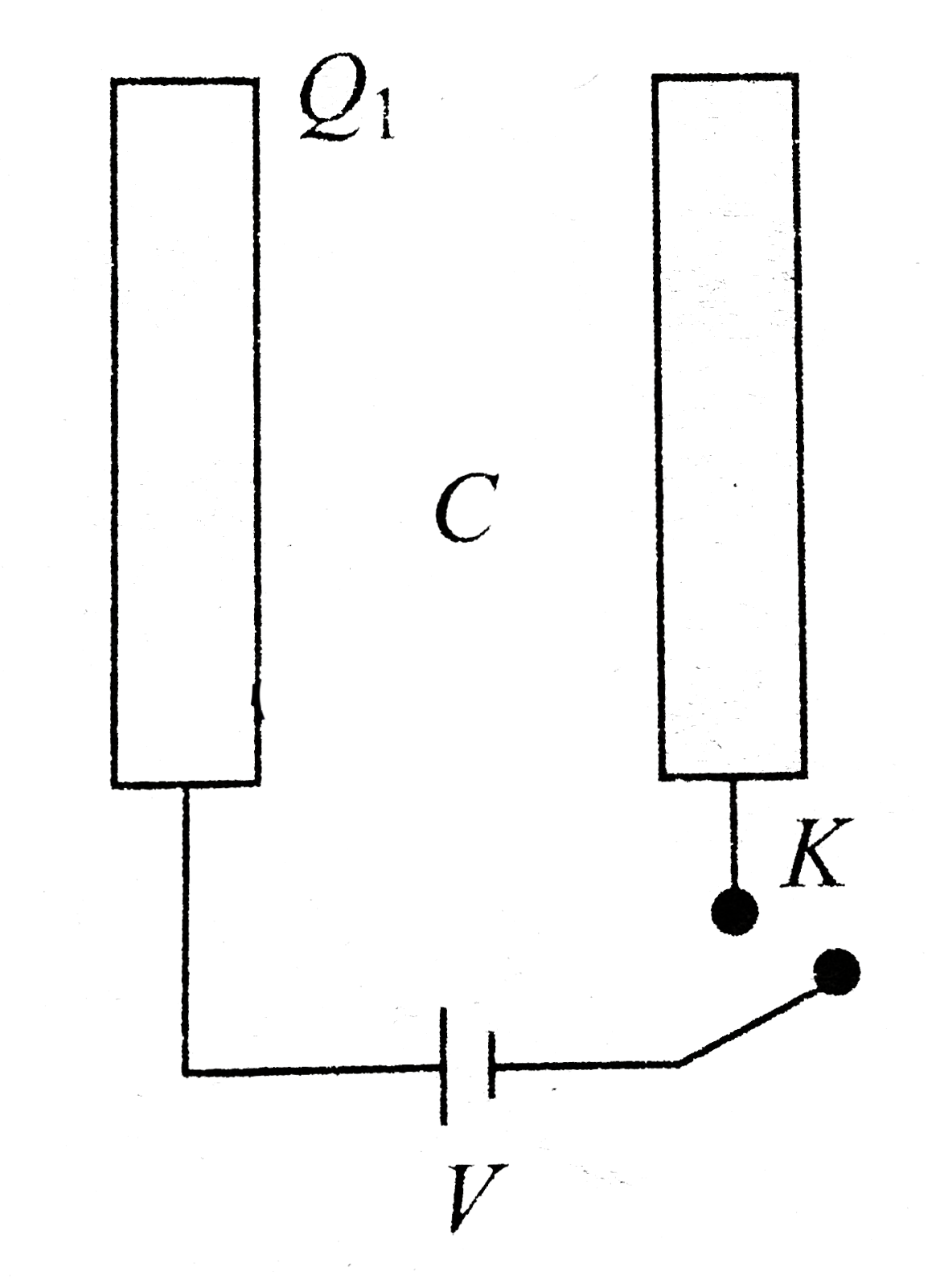An arrangement of three large metallic parallel plates with respective charges marked in figure is shown . What is the charge appearing on the left face of plate B ?
Zero
Q2−Q12
−Q1
+Q2
The correct Answer is:2
To find the charge appearing on the left face of plate B in the arrangement of three large metallic parallel plates, we can follow these steps:
1. Identify the Plates and Their Charges:
- We have three plates: A, B, and C.
- Let the charge on plate A be Q1, the charge on plate B be 0 (since it is uncharged), and the charge on plate C be Q2.
2. Understand the Charge Distribution:
- The charge on a metallic plate redistributes itself in response to the electric fields created by the other plates.
- Since plate B is neutral, it will have induced charges on its faces due to the presence of plates A and C.
3. Determine the Charge on the Left Face of Plate B:
- The charge on the left face of plate B will be influenced by the charge on plate A.
- The electric field created by plate A will induce a charge on the left face of plate B.
4. Use the Concept of Induced Charge:
- The induced charge on the left face of plate B can be calculated using the principle of superposition.
- The total charge on the left face of plate B can be found using the formula:
Qleft face of B=Q1−Q22
- This formula comes from the fact that the charge distribution will balance out due to the influence of the other plates.
5. Final Calculation:
- Therefore, the charge appearing on the left face of plate B is:
Qleft face of B=Q1−Q22
Conclusion:
The charge appearing on the left face of plate B is Q1−Q22.
- We have three plates: A, B, and C.
- Let the charge on plate A be Q1, the charge on plate B be 0 (since it is uncharged), and the charge on plate C be Q2.
- The charge on a metallic plate redistributes itself in response to the electric fields created by the other plates.
- Since plate B is neutral, it will have induced charges on its faces due to the presence of plates A and C.
- The charge on the left face of plate B will be influenced by the charge on plate A.
- The electric field created by plate A will induce a charge on the left face of plate B.
- The induced charge on the left face of plate B can be calculated using the principle of superposition.
- The total charge on the left face of plate B can be found using the formula:
Qleft face of B=Q1−Q22
- This formula comes from the fact that the charge distribution will balance out due to the influence of the other plates.
- Therefore, the charge appearing on the left face of plate B is:
Qleft face of B=Q1−Q22
The charge appearing on the left face of plate B is Q1−Q22.
Topper's Solved these Questions
- ELECTROSTATIC POTENTIAL AND CAPACITANCE BOOK - AAKASH INSTITUTE ENGLISHCHAPTER - ELECTROSTATIC POTENTIAL AND CAPACITANCE EXERCISE - SECTION-C (OBJECTIVE TYPE QUESTIONS (More than one answer))
13 Videos
- ELECTROSTATIC POTENTIAL AND CAPACITANCE BOOK - AAKASH INSTITUTE ENGLISHCHAPTER - ELECTROSTATIC POTENTIAL AND CAPACITANCE EXERCISE - SECTION-D(COMPREHENSION-I)
2 Videos
- ELECTROSTATIC POTENTIAL AND CAPACITANCE BOOK - AAKASH INSTITUTE ENGLISHCHAPTER - ELECTROSTATIC POTENTIAL AND CAPACITANCE EXERCISE - SECTION-B (OBJECTIVE TYPE QUESTIONS (ONLY ONE ANSWER) )
1 Videos
- ELECTROMAGNETIC WAVESBOOK - AAKASH INSTITUTE ENGLISHCHAPTER - ELECTROMAGNETIC WAVESEXERCISE - ASSIGNMENT SECTION - D Assertion-Reason Type Questions
25 Videos
- GRAVITATION BOOK - AAKASH INSTITUTE ENGLISHCHAPTER - GRAVITATION EXERCISE - ASSIGNMENT SECTION - D (ASSERTION-REASON TYPE QUESTIONS)
15 Videos
Similar Questions
The nagative plate of a parallel plate capacitor is given a charge of −20X10−8C. Find the charges appearing on the four surface of the capacitor plates.

View SolutionTwo metallic plates are kept parallel to one another and charges are given to them as shown in figure. Find the charge on all the four faces.

View SolutionFour metallic plates placed as shown in the figure. Plate 2 is given a chart Q whereas all other plates are uncharged. Plates 1 and 4 are joined together. The area of each plate is same

The charge appearing on the right side of plate 3 is
View SolutionFour metallic plates placed as shown in the figure. Plate 2 is given a chart Q whereas all other plates are uncharged. Plates 1 and 4 are joined together. The area of each plate is same

The charge appearing on the right side of plate 4 is
View SolutionFigure shows three large metallic plates with chrges −Q,3Q and Q respectively. Determine the final charges on all the surfaces.

View SolutionTwo charges −q each are separated by distance 2d. A third charge +q is kept at mid-point O. Find potential energy of +q as a function of small distance x from O due to −q charges. Prove that the charge at O is in an unstable equilibrium.
View SolutionFive identical capacitor plates each of area. A are arranged such that adjacent plates are at a distance d apart. The plates are connected to a square of emf V as shown. What is the magnitude and nature of charge on plates 1 and 3, respectively ?

View SolutionIn a parallel plate capacitor with plate area A and charge Q, the force on one plate because of the charge on the other is equal to
View SolutionFor the system shown in capacitance is C The left plate is given a charge Q1 and the switch is closed.
 .
.
Find the charge appearing on the inner face of the left plate.
View SolutionThree metallic plates out of which the middle is given charge Q as shown in the figure. The outer plates can be earthed with the help of switches S1andS2 . The area of each plates is the same. Answer the following question based on the given passage.

View Solution
